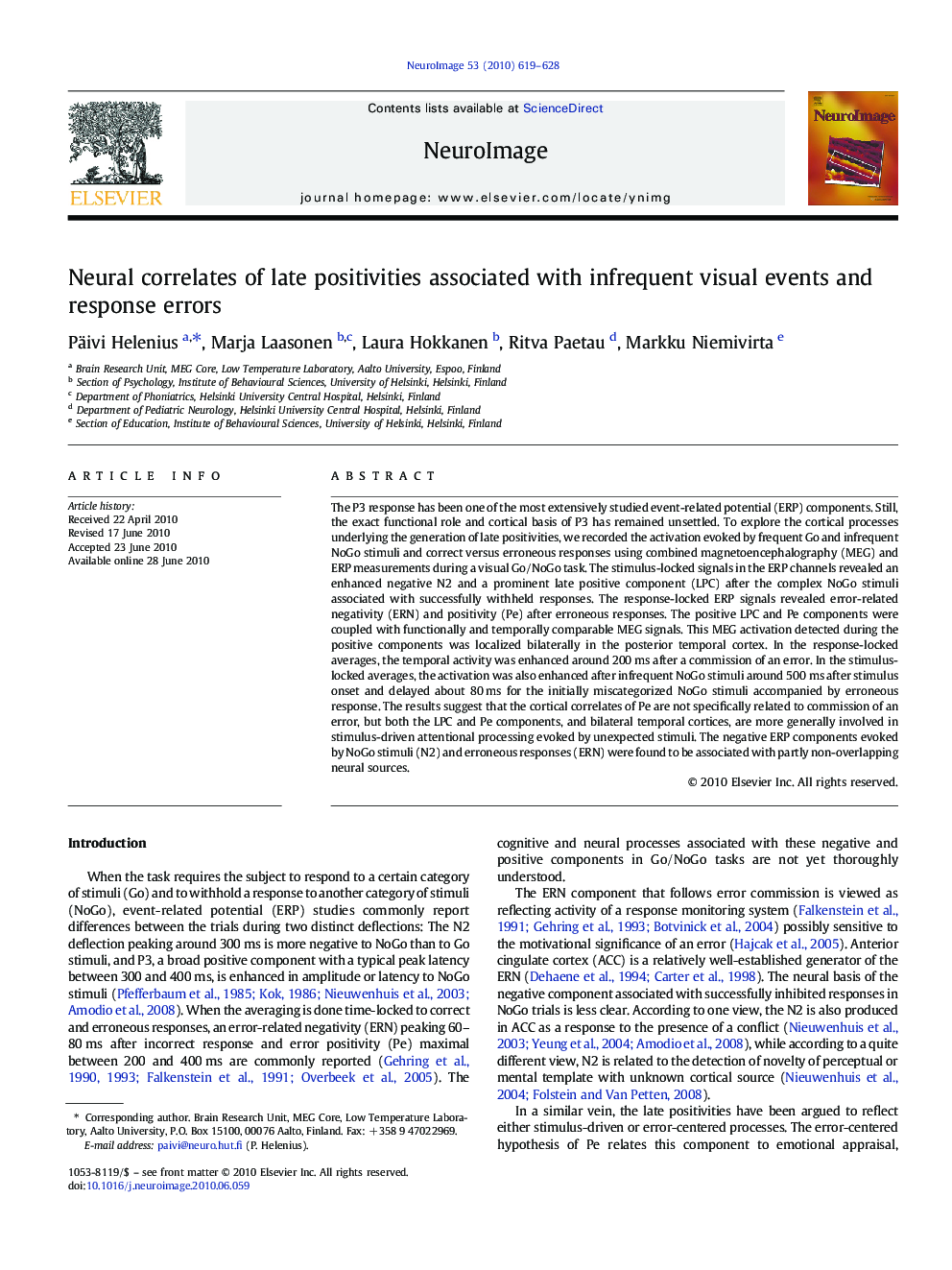| Article ID | Journal | Published Year | Pages | File Type |
|---|---|---|---|---|
| 3072278 | NeuroImage | 2010 | 10 Pages |
The P3 response has been one of the most extensively studied event-related potential (ERP) components. Still, the exact functional role and cortical basis of P3 has remained unsettled. To explore the cortical processes underlying the generation of late positivities, we recorded the activation evoked by frequent Go and infrequent NoGo stimuli and correct versus erroneous responses using combined magnetoencephalography (MEG) and ERP measurements during a visual Go/NoGo task. The stimulus-locked signals in the ERP channels revealed an enhanced negative N2 and a prominent late positive component (LPC) after the complex NoGo stimuli associated with successfully withheld responses. The response-locked ERP signals revealed error-related negativity (ERN) and positivity (Pe) after erroneous responses. The positive LPC and Pe components were coupled with functionally and temporally comparable MEG signals. This MEG activation detected during the positive components was localized bilaterally in the posterior temporal cortex. In the response-locked averages, the temporal activity was enhanced around 200 ms after a commission of an error. In the stimulus-locked averages, the activation was also enhanced after infrequent NoGo stimuli around 500 ms after stimulus onset and delayed about 80 ms for the initially miscategorized NoGo stimuli accompanied by erroneous response. The results suggest that the cortical correlates of Pe are not specifically related to commission of an error, but both the LPC and Pe components, and bilateral temporal cortices, are more generally involved in stimulus-driven attentional processing evoked by unexpected stimuli. The negative ERP components evoked by NoGo stimuli (N2) and erroneous responses (ERN) were found to be associated with partly non-overlapping neural sources.
Research highlights►In a visual Go/NoGo task event-related potentials revealed a prominent late positive component (LPC) after infrequent NoGo stimuli and positivity (Pe) after erroneous response. ►The positive components LPC and Pe were both coupled with bilateral MEG activation in the posterior temporal cortex. ►The cortical correlates of Pe are not specifically related to commission of an error. ►Late positive components and bilateral temporal cortices are involved in stimulus-driven attentional processing evoked by unexpected stimuli.
